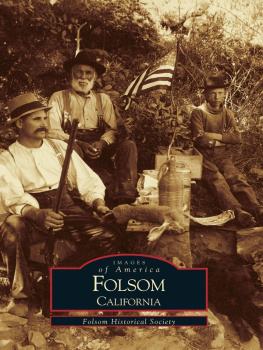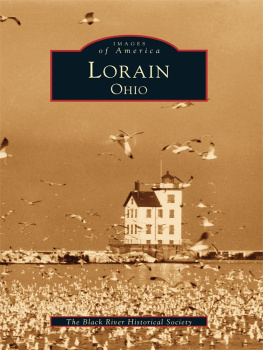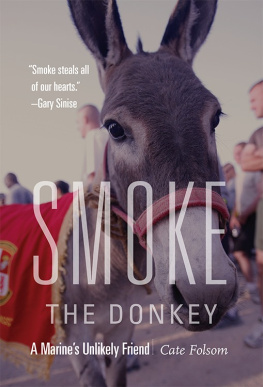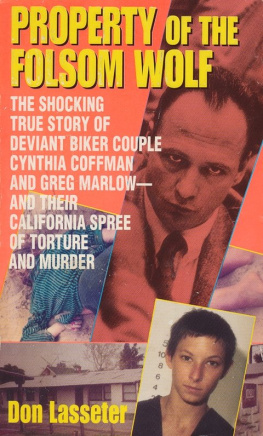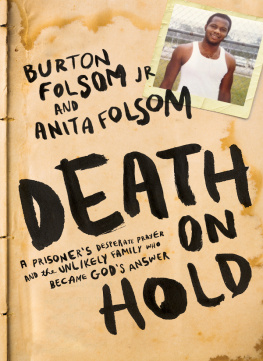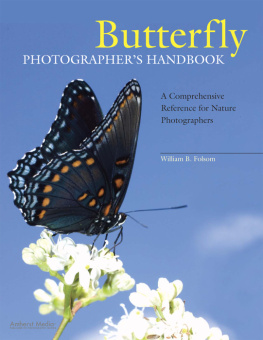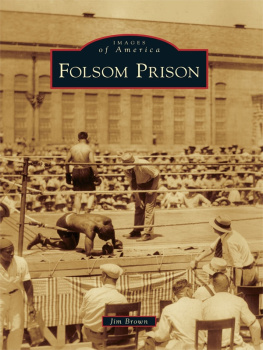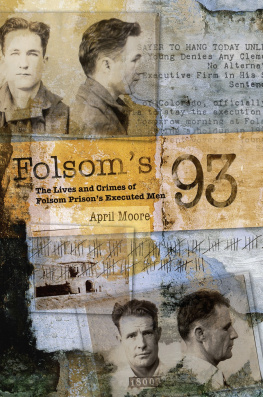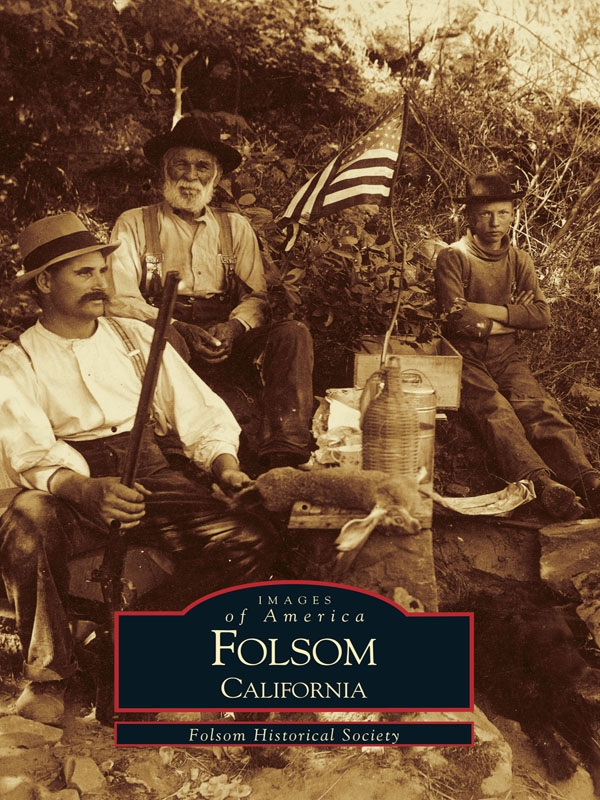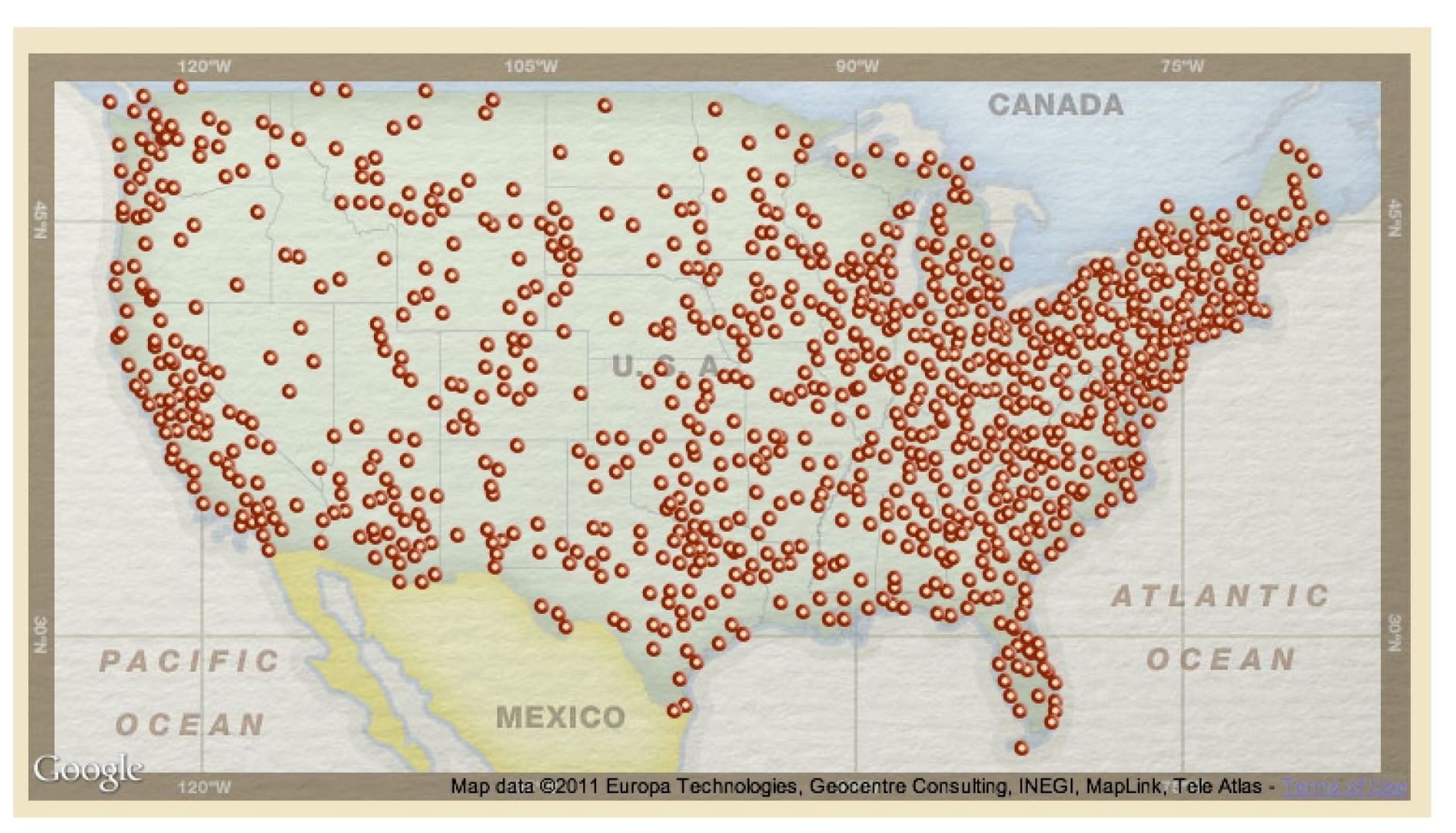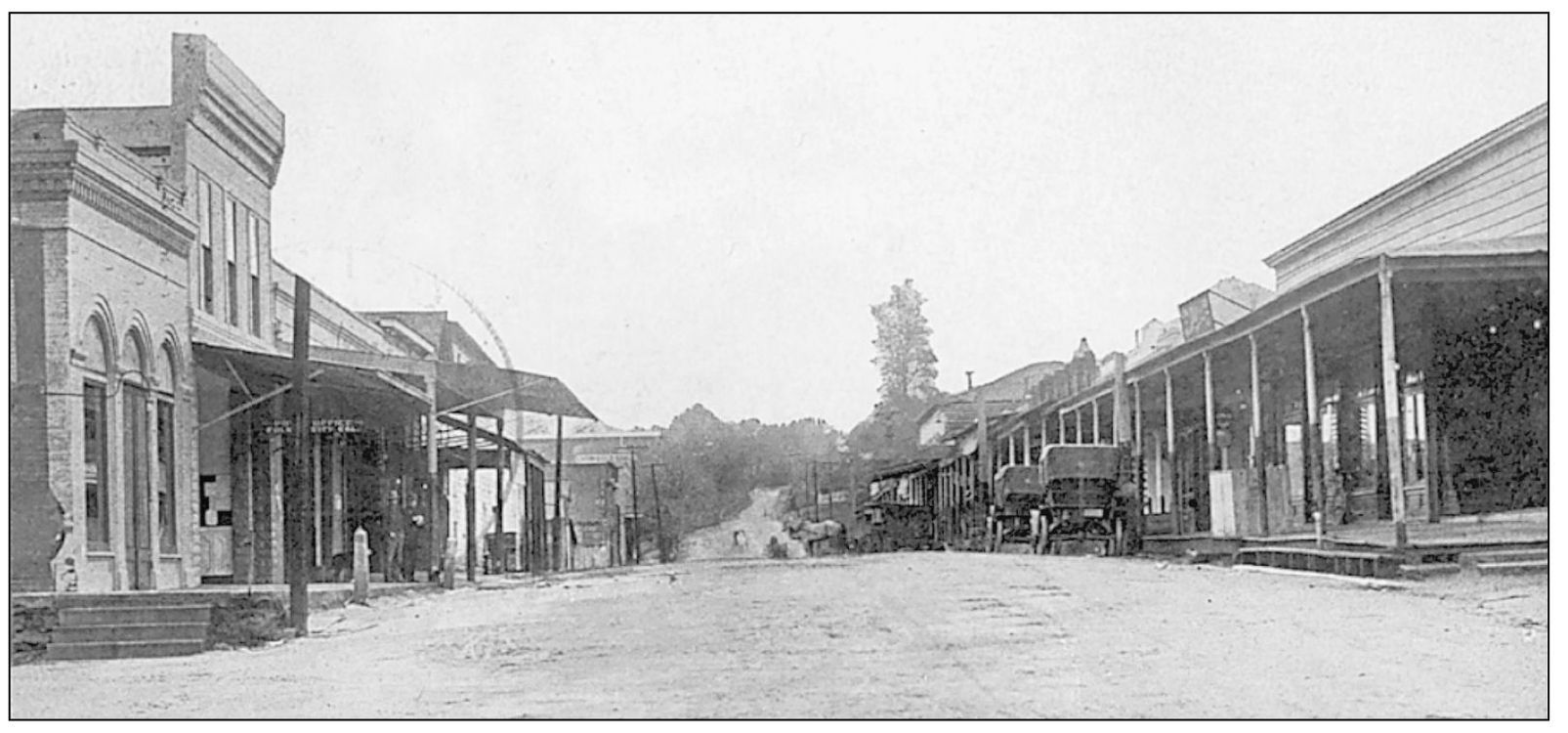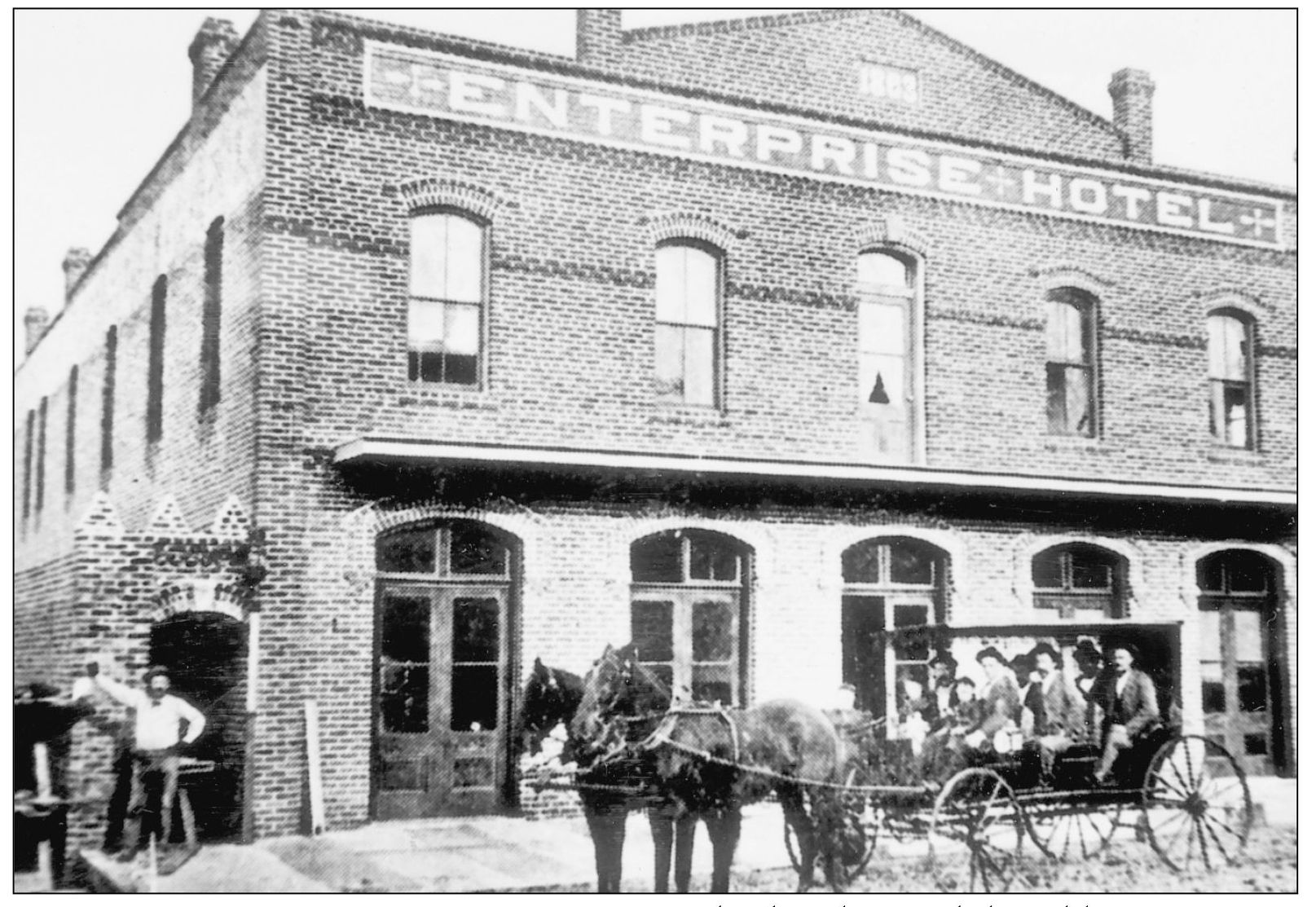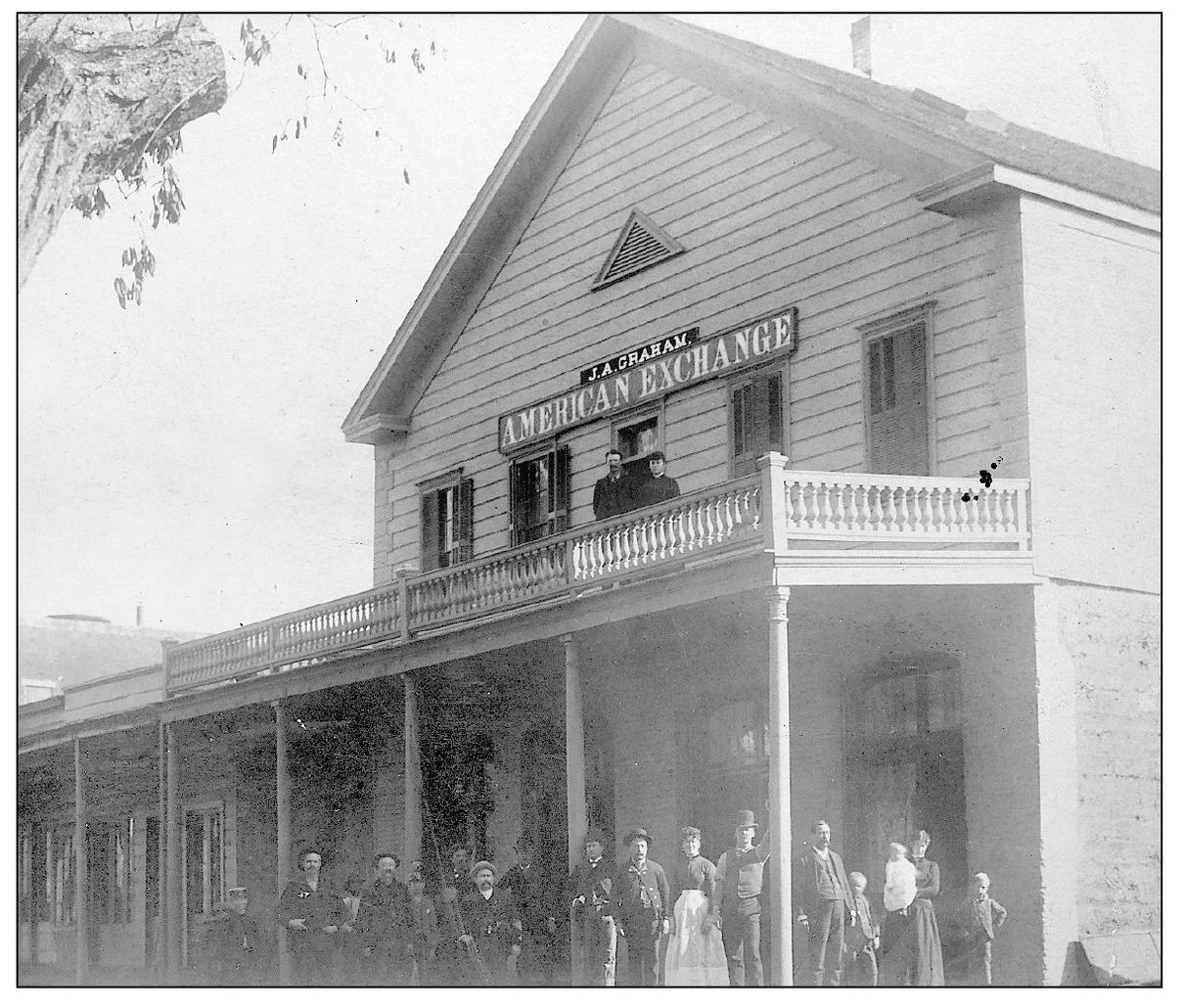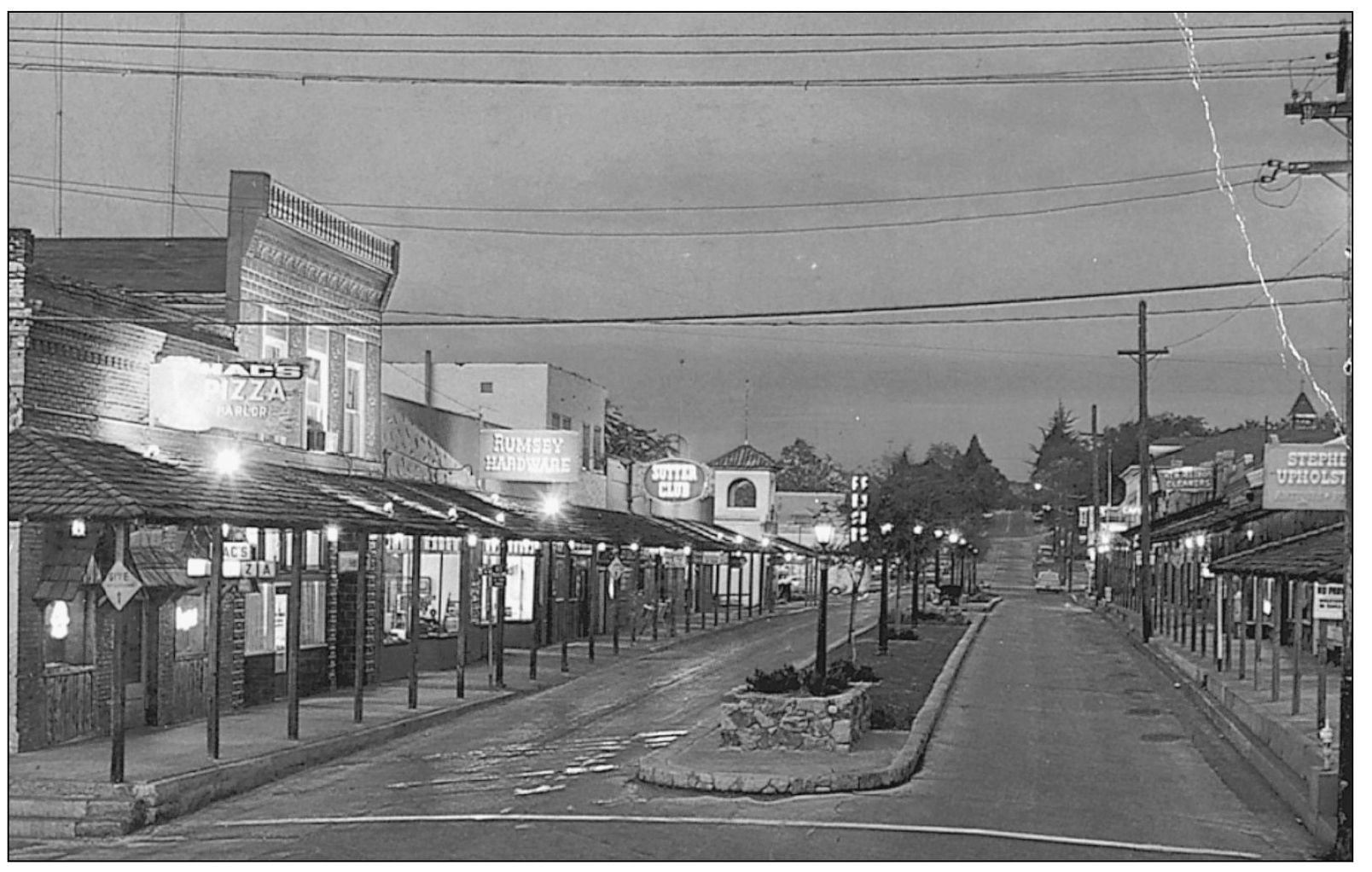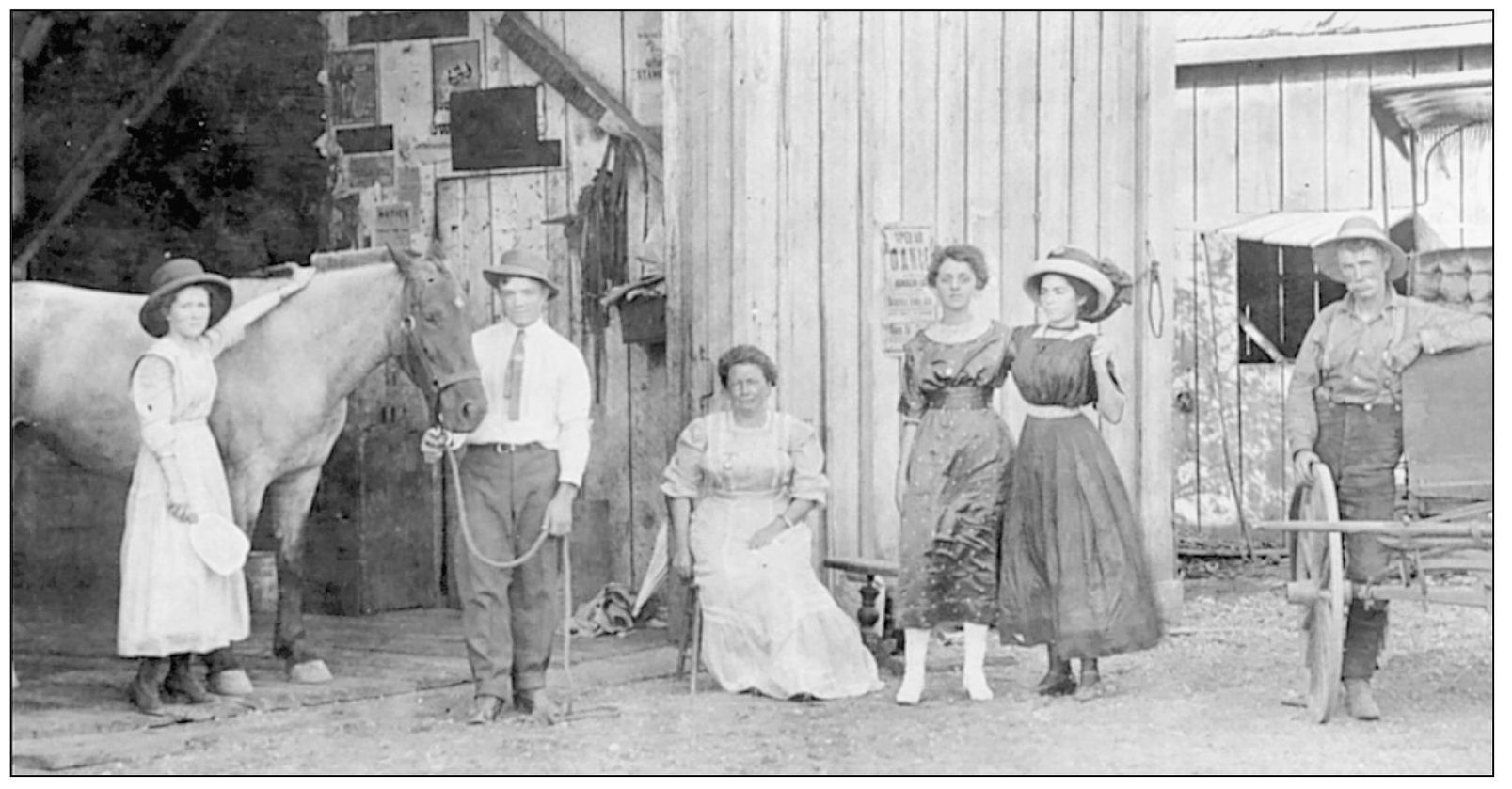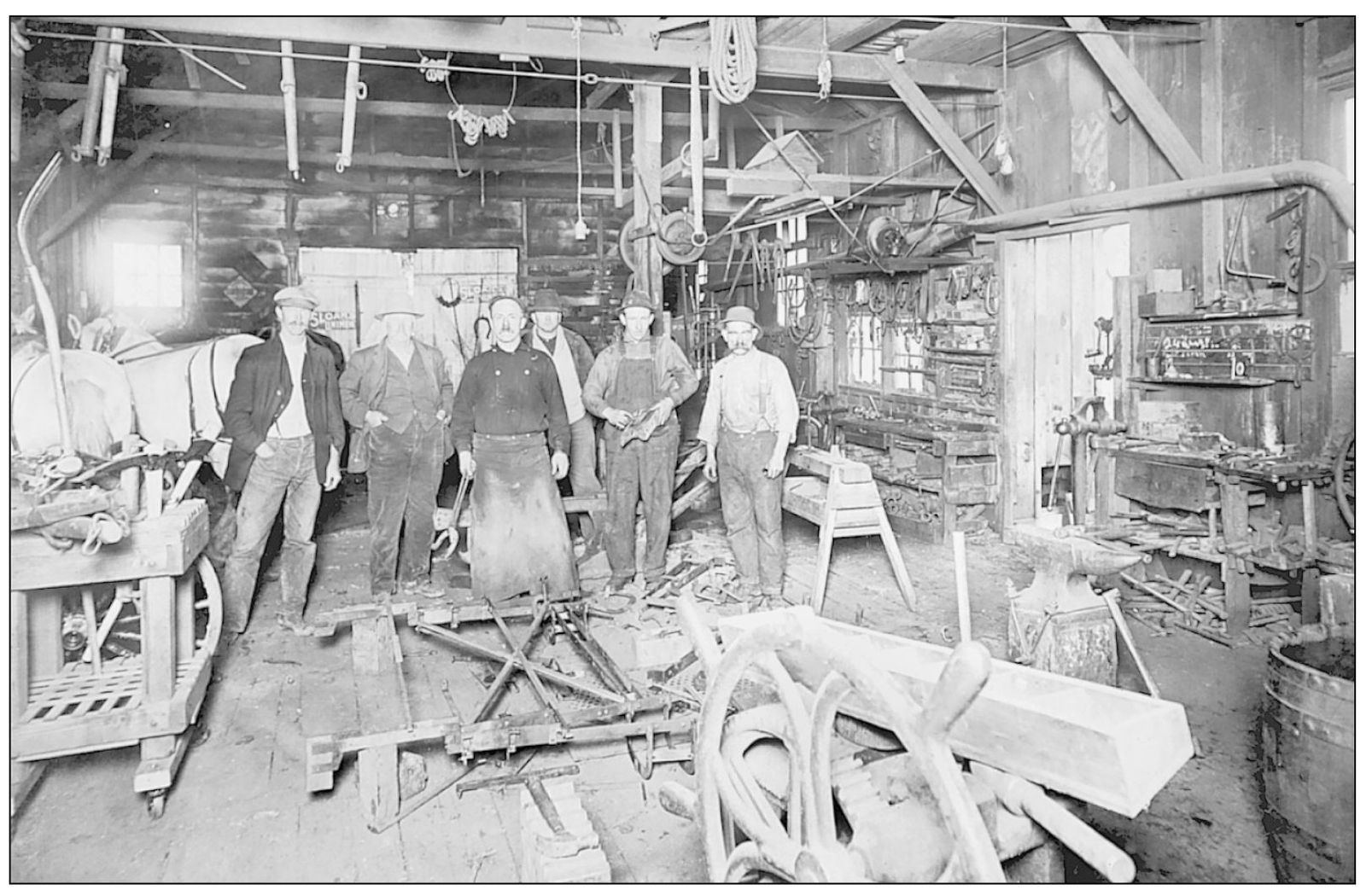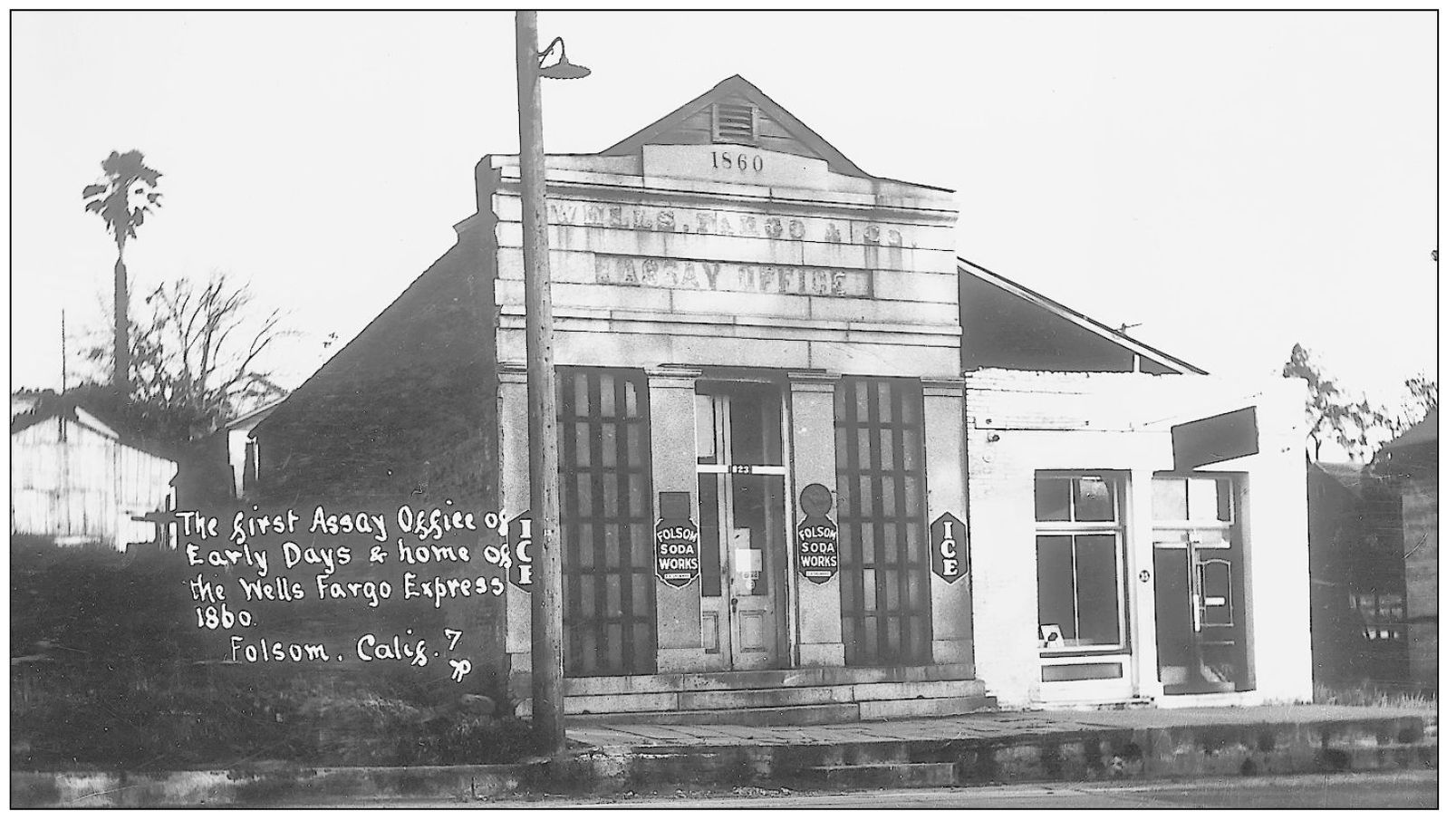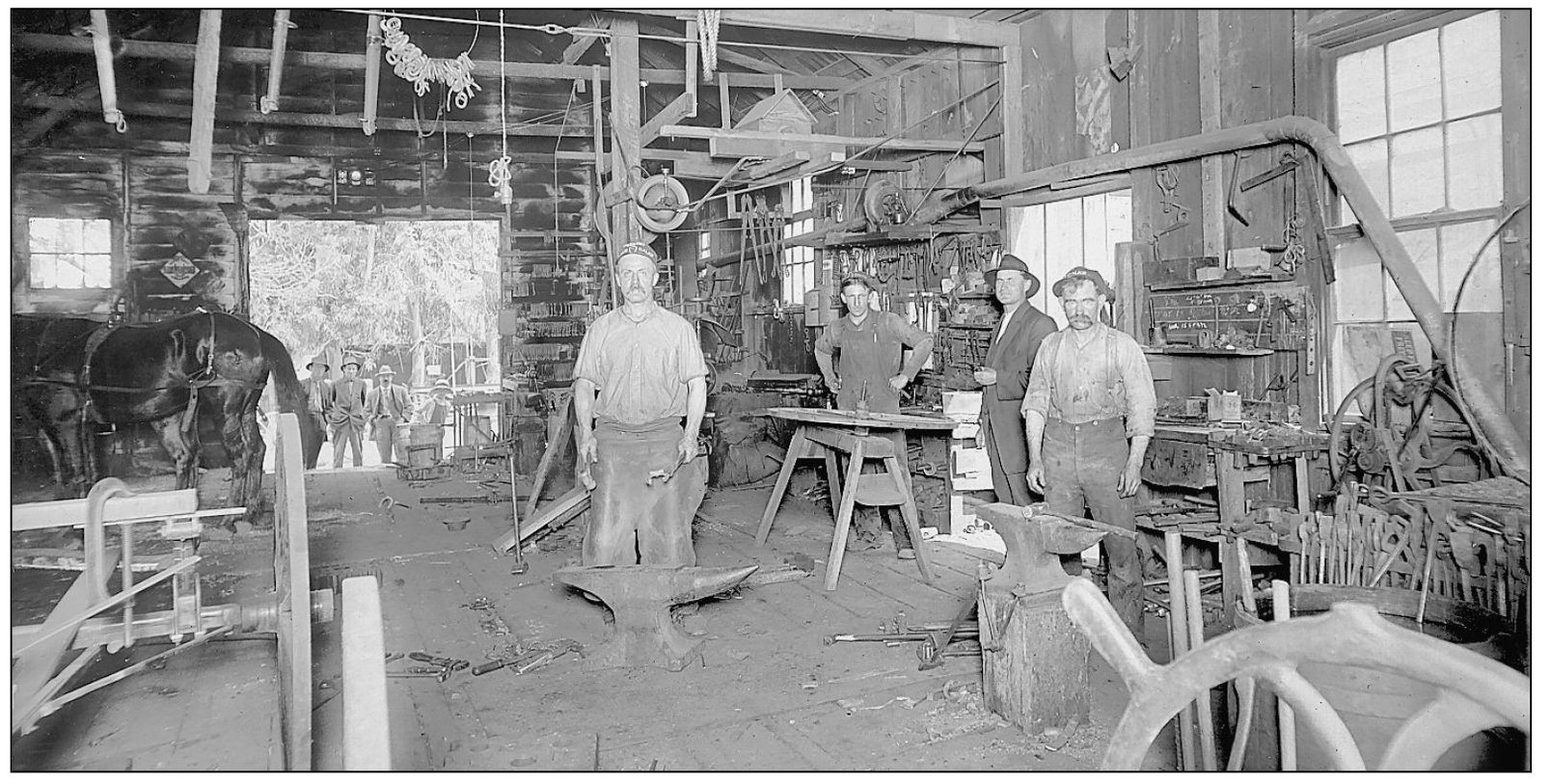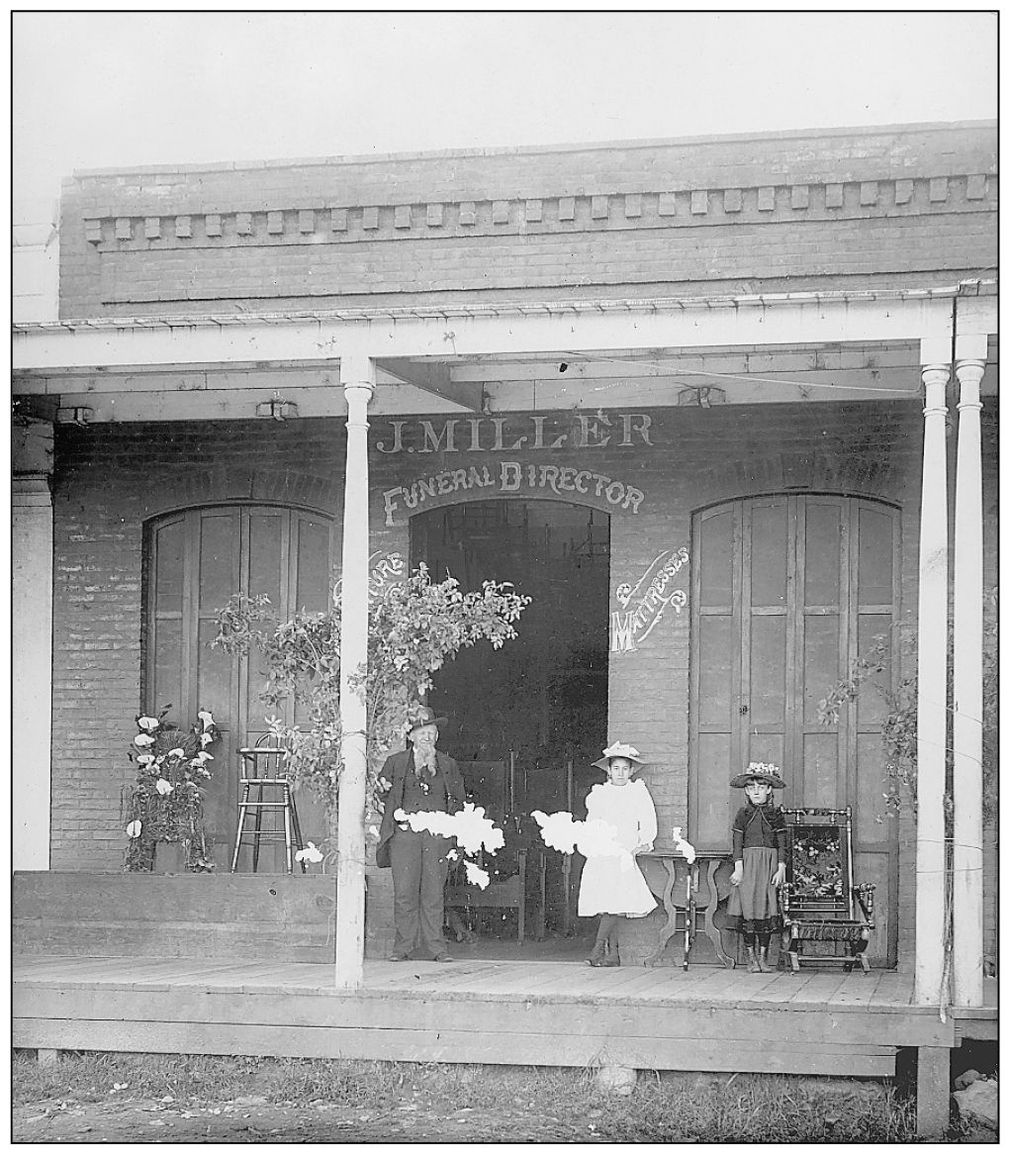One
SUTTER STREET
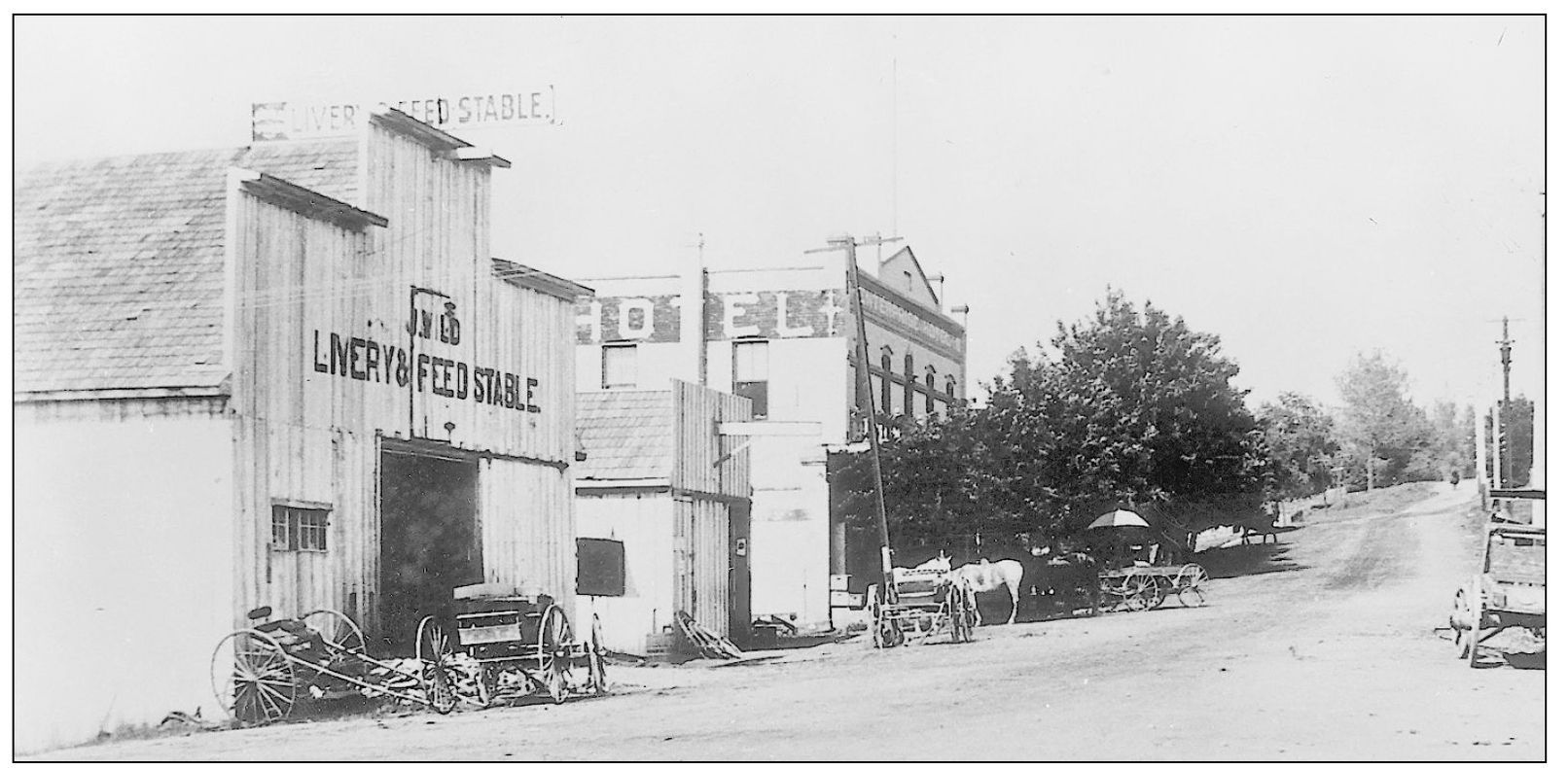
TURN-OF-THE-CENTURY SUTTER STREET, 1908. Looking northward at the intersection of Sutter and Riley Streets, Johnnie Wilds Livery and Feed Stable is visible on the near left. Later, the Hoxsie Ford dealership occupied the space until the mid-1960s. The Enterprise Hotel, built in 1893, stood next to the blacksmith shop. The first recognized hotel, the Empire, was actually located in Negro Bar. Other hotels included the Central Hotel, the American Exchange Hotel, and two different Granite Hotels (one of which was also operated as the Hotel De France). Then there was the Olive Branch Hotel, the Patterson Hotel, the Wheeler House (also known as the Mechanics Exchange), the Tremont House, the Union House, the German Hotel (which burned and was rebuilt as the New Western Hotel), and the Mansion House. Most were two-story, frame structures. The towns newspaper, The Folsom Telegraph , and the American River Press occupied a vacant lot on the right by the 1940s. In an 1865 edition of The Folsom Telegraph , Mrs. H.B. Waddilove placed this advertisement: Patterson House. Corner of Reading and Leidesdorff Streets, Folsom. The undersigned respectfully announces to her numerous friends and the traveling public that she has leased the above well-known house, and is now prepared to receive all that may favor her with their patronage. And she assures her patrons that no pains will be spared to make it a FIRST CLASS HOTEL.
SUNDAY MORNING, C. 1914. This is how the 700 block of Sutter Street appeared around this time period. It was probably early on a Sunday morningotherwise the street that sliced through the towns active business district would be bustling with activity. Notice there are no utility poles, except for one on the left with its top cut off. Apparently the photo finisher removed them.
EARLY HOTELS DID BIG BUSINESS. Kate Foster, a hard working and shrewd businesswoman, was proprietress of the Enterprise Hotel. Considered a large hotel in its time, the Enterprise, in operation by 1893, was renowned for its cleanliness and close proximity to the train depot, so travelers from throughout the state frequented the popular establishment. It had a central garden with croquet lawn, and weddings were held in the lobby. Kates son, James Donnelly, who also served the town as constable and manager of the livery stable and blacksmith shop, assisted her.
A FAMILY-OPERATED HOTEL. John Graham, pictured standing at the right with his wife, Amelia Meyer Graham, and their children, Ed, Ira, and baby Hazel, built the American Exchange Hotel in 1875. The two-story, frame construction of the American Exchange was typical of most hotels built in Folsom, although a few were constructed of brick. In 1892, the hotel burned in one of the last major fires in Folsom.
A MORE MODERN SUTTER STREET. By the mid-1960s, Sutter Street was sporting a landscaped median strip. Today, the tiny trees shown here on the strip are all grown up, lending shade to the picturesque street. Holidays and special events find the street adorned in festive decorations, while thousands gather to celebrate during its many special events, such as the annual peddlers fair, spring and Christmas craft shows, and the Christmas Illuminarios.
THE VILLAGE BLACKSMITH. Early Folsom citizens gather in front of a blacksmith shop. Folks always gathered there to discuss the weather and politics and curious children loved towatch him work. The blacksmith held one of the most important positions in town. His work held the town together, whether it was keeping the horses well shod or repairing farm tools and equipment.
CRUICKSHANKS BLACKSMITH SHOP. William Cruickshank, pictured center, opened a blacksmith shop on the present site of the Folsom History Museum in 1910. He was a Scottish immigrant who brought his wife, Catherine, and daughter to America around the turn of the century. The couple eventually had eight children. In addition to his blacksmith shop, Cruickshank also stored ice in the building, delivering it to homes and businesses around town. Later, Paul Murer and Red Brugler operated the Peoples Garage in the same building.
THE PALMER & DAY ASSAY OFFICE. This office, known as the Wells Fargo & Co. building, located at 823 Sutter Street, was built in 1860 by C.T.H. Palmer and Roger Day who were Wells Fargo agents, assayers, and bankers. It also served as the western terminus for the Pony Express from July 1860 to October 1861. In 1959 it was dismantled to make way for a service station. The historic buildings granite facade and iron doors were saved when the Folsom Historical Society reconstructed it and rededicated it in 1976. It opened as the Folsom History Museum in 1983. Today, the museum serves as headquarters for the society, and is home to permanent, as well as changing, exhibits. As this photo shows, the building also housed the Folsom Soda Works at one time.
ANOTHER VIEW OF CRUICKSHANKS BLACKSMITH SHOP. A blacksmiths job was much more involved than just hammering on a set of horseshoes, although horseshoe making was an art in itself. An ill-shod horse was of no use to anyone. William Cruickshanks blacksmith shop was no exception. He created tools and other equipment necessary to the operation of the community and its ranches, such as hoes, plowshares, cowbells, awls, scrapers, and plane blades, to name a few.

